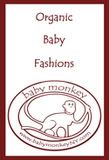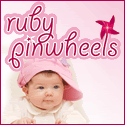Originally, this idea came from the Blog "The Sunny Patch". It is an activity I keep adding to and just love! The idea is to come up with an activity and put all the pieces necessary in its own ziploc bag. Here are some ideas from the Sunny Patch blog:
1. Pattern Beads –a. Materials needed: pipe cleaners, pony beads in assorted colors, hot glue gunb. Put together the bag: Put beads on a pipe cleaner, following a specific pattern (ex: red, blue, green, red, blue green) and glue the beads on each end to keep them in place. Provide the child with another pipe cleaner and enough beads to complete the same pattern.c. Objective: Show the child how to follow a pattern.d. Another option: Don’t glue on the beads, just let the child string the beads as he wants.
2. Yarn art –a. Materials needed: different lengths of yarn in assorted colors, a large piece of sandpaper (attached to a piece of cardboard for more stability)b. Put together the bag: Put all the supplies in a bag.c. Objective: Show the child how to make pictures and patterns on the sandpaper with the yarn.
3. Silly faces –a. Materials needed: assorted colors of felt, yarn, googly eyes, Velcro dotsb. Put together the bag: Make a few head shapes from felt. From the other colors make eyes, ears, noses, mouths, hair, moustaches, etc. Use the yarn to make more hair. Attach Velcro dots to the backs of the googly eyes.c. Objective: Let the child make silly faces from the materials provided.
4. Counting cups –a. Materials needed: small objects to count (pennies, beans, pom poms), permanent marker, small clear plastic cupsb. Put together the bag: On each plastic cup make a series of dots (on one cup put one dot, on another put two, on another put three, etc.). Provide as many objects to count as necessary to fill all the cups.c. Objective: Show the child how to put the objects in the cups according to how many dots are on the cup.
5. Pasta sort –a. Materials needed: small pasta (elbows or bow ties), food coloring, rubbing alcohol, small clear plastic cupsb. Put together the bag: For each color of pasta – put ½ cup rubbing alcohol in a small container. Add food coloring and stir. Put in some pasta and mix. When the pasta has absorbed as much color as you want it to, pull it out with a slotted spoon and let it dry.c. Objective: Have the child separate the pasta by color.d. Another option: Buy colored paper clips and have your child sort those.
6. Sewing –a. Materials needed: small squares or rectangles of plastic canvas, shoe lacesb. Put together the bag: Put the items in a bag for storage.c. Objective: Show child how to thread the lace through the holes in the plastic canvas.
7. Shape matching –a. Materials needed: small shapes cut from sheets of foam, index cards, markerb. Put together the bag: Trace each shape onto an index card and put the shapes and cards in a bag.c. Objective: Show the child how to match the shape to its outline.d. Another option: If you find foam letters or numbers, this works with them as well.
8. Stained-Glass art –a. Materials needed: glue stick, small rectangles of waxed paper (as small as index card size or as large as a half-sheet of paper ), small squares of tissue paper (1”x1”) in various colors.b. Put together the bag: Put all the supplies in a bag.c. Objective: Show the child how to use the glue stick to glue the pieces of tissue paper. When he has completed one, tape it to a sunny window.
9. Coloring –a. Materials needed: coloring book and crayonsb. Put together the bag: Put all supplies in a bag.c. Objective: Coloring!
10. Play-dough letters and numbers –a. Materials needed: index cards, clear contact paper, marker, container of play doughb. Put together the bag: Write a letter of the alphabet or a number on each index card. Cover each index card with clear contact paper. Put these cards, along with the play dough in a bag.c. Objective: Show the child how to roll out “snakes” with the play dough. Use these to make the letter or number shapes on the cards.
11. Magnet lettersa. Materials needed: small cookie sheet (the kind that goes in a toaster oven), magnet letters and numbersb. Put together the bag: Put the letters on the cookie sheet and then in a bag.c. Objective: Let the child make words, practice his letter sounds, etc.
12. Chalkboarda. Materials needed: small chalkboard, chalk, eraserb. Put together the bag: Put all supplies in a bag.c. Objective: Let the child write on the chalkboard.
13. Books on tapea. Materials needed: cassette tape, favourite book, recordable cassette playerb. Put together the bag: record your voice reading the book onto the cassette.c. Objective: Let the child listen to you reading his favourite book
14. Boredom baga. Materials needed: index cards, penb. Put together the bag: write out chores, things for child to do on the index cards (some ideas: dust the furniture; help make lunch; sweep the floor)c. Objective: The child gets to pick something out of the bag when he complains that he is bored.
15. Rice bowla. Materials needed: measuring cups or spoons, rice, small bowlsb. Put together the bag: put the rice in a small Ziploc bag put all the materials in one bag.c. Objective: Show the child how to pour and measure.
16. Number matcha. Materials needed: small stickers, index cards, penb. Put together the bag: on one set of index cards write the numbers 1 through 10 on individual cards. On the other set put stickers to correspond with each numbered card.c. Objective: Have the child match the number card to the with the appropriate sticker card.
17. Tick Tock Clocka. Materials needed: paper plate, paper fastener, construction paper, index cards, marker, scissorsb. Put together the bag: Make a clock – write the numbers on the paper plate for the clock face. Make a minute hand and an hour hand from construction paper and fasten to the paper plate with the paper fastener. On the index cards draw clocks with different times and write the time underneath each clock.c. Objective: Show the child how to match the paper plate clock to the times on the index cards.
18. Counting. Label 10 index cards with numerals 1-10 . On the back of each card stick on the appropriate number of stickers, i.e., 6 stickers on back of the card labeled "6." Have the child 1) place a card numeral side up, 2) count out the correct number of counters, 3) turn the card over and match up counters & stickers in one-to-one correspondence. This is a self checking activity. If the stickers and counters don't match up something is wrong. He can repeat with additional cards until bored, or have a "rule" like "choose and do 4 cards then stop."
19. Cutting. Provide ½ sheets of paper onto which you have drawn simple wavy lines with a wide black marker. I used to put stickers at the ends of the lines (birds, butterflies, bugs, cars, space ships - something interesting to "go for." Draw 2 or 3 lines on each ½ sheet - the lines should be roughly parallel, not intersecting. Provide scissors and say "Can you cut along the line to all the way to the bird (or whatever.) Graduate to simple closed shapes instead of lines.
Another variation of this is to use shoeboxes:
Lace up box: Shapes cut from old bleach bottles and cardboard, with holes cut around them with a hole punch; colored laces, big wooden beads, spools, stringing foam shapes I found at a garage sale.
Doll box: a small doll with clothes, a bottle, pacifiers, bibs, a baby spoon, a baby dish, etc. (a lot of it recycled from her own baby stuff).
Magnet box: several magnets, paper clips, coins, a piece of iron ore, screws, etc.
Art box: construction paper, scissors, gluestick, dot painters, rubber stamps, washable inkpad.
Math box: homemade fishing game with numbers on it with fishing pole, cuisinaire rods (left over from sons), pattern blocks.
Button box: variety of old buttons to sort.
Or totes:
no spill bubbles
a clothesline to tie on 2 chairs and an assortment of "clothes" and clothespins
crayons and sandpaper ( a friend told me that little ones like the texture to color on)
white rice in the tote and different scoops. (can be vacuumed up)
stickers and paper plates
bingo dotter and paper
paintbrush and water (to be "painted" on cardboard)
wastebasket and sock balls
sticky masking tape balls to throw at the wall, fridge, etc. Watch them stick!
treasure hunt in the cotton balls (lots of goodies can hide in a tub of cotton balls)
a box and assorted canned goods (my toddlers love to move things into and out of boxes)
bean bags and pie pans
some different colors of yarn in different lengths are great with the sandpaper too. They will stick to it and make different designs
all those free stickers, address labels, etc. that come in the mail - he can just stick to his heart’s content
a magnet set and a metal cake pan with a sliding lid
an empty shoe box with a cord tied through a hole poked in one end, he likes to use it as his wagon and pull a stuffed animal all around the house.
an egg carton turned upside down with holes cut in the bottoms of the egg spaces, and 12 wooden clothespins. They can stick these in and out of the holes.
an empty paper towel tube and a toy car or small rubber ball to roll through it, if they know not to put it in their mouth.
some small containers with different types of lids to take on and off
a piece of wood covered with velcro. Put velcro on the bottoms of several small toys and they can stick these on and off.
send him on hunts through the house to find something that is a square, or something blue. This takes a little more help from me.
tongs, two bowls, and anything you can pick up with tongs
two cheap bowls, a ladle, and rice/beans
ice cube tray or divided party tray from the dollar store, and an assortment of dried beans or some plastic jewels to sort Kelly says:
a cloth measuring tape to measure with (the metal ones have sharp edges)
a large box (yep, that's all!)
give them watercolor markers, put on old shorts, and let them body-paint... bubble bath follow-up required! (No lip or eye decorating!)
Monday, August 25, 2008
Subscribe to:
Post Comments (Atom)




















0 comments:
Post a Comment